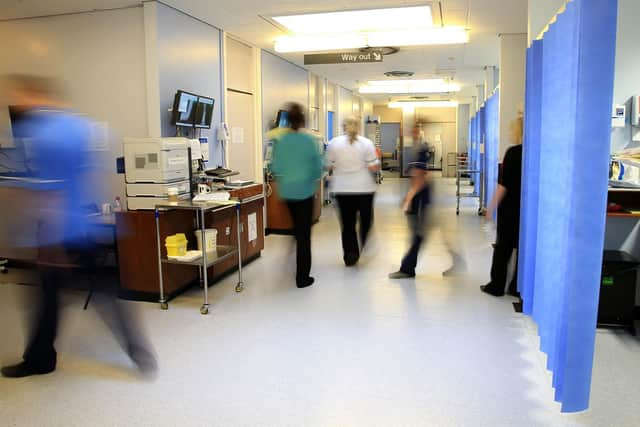Putting NHS patients at the heart of Mid Yorkshire Hospitals' decisions - Len Richards
It’s certainly been a busy time as we face some of the biggest pressures and challenges the NHS has ever had to tackle, but one of the things that I truly believe is helping us to navigate these challenges is the way our wider health system works so closely and collaboratively.
During my seven months, I’ve met with many colleagues from across the local healthcare system and it’s been a pleasure to start to get to know the wider team that makes up the place-based arrangement in Kirklees and Wakefield District alongside the West Yorkshire Health and Care Partnership, our integrated care system (ICS).
Advertisement
Hide AdAdvertisement
Hide AdI have always seen the value in system working, engagement with primary care, community services and close collaboration with local authorities, and the fact that the Health and Care Bill, currently going through Parliament will – if approved – put integrated care systems on a statutory footing is testament to the fa- ct that the benefits of collaborative working are widely recognised.


Indeed, when we think about a model of system working, I firmly believe that we need to look outside the confines of our own organisations/boundaries – both geographic and sector related – for examples of good practice and inspiration.
Integrated healthcare systems are developing across the world as we all strive to respond to the same pressures of overcrowded acute hospitals, and a lack of sustainability. We can learn and adapt from what others have done.
It wasn’t until I had the opportunity to work in Australia, where I ran a hospital and health service, that I saw the real benefit of system working, which was then magnified with the help
Advertisement
Hide AdAdvertisement
Hide Adand support from some international colleagues when I led the Cardiff and Vale University Health Board in the Welsh Health System.
In my role as CEO at Cardiff and Vale I reached out to the Canterbury District Health Board, in New Zealand, in the hope of being able to learn from the way in which they went about their transformation to become one of the best and most integrated care systems in the world.
It was a real eye opener, not only did it demonstrate that there were different community-based models of care, but it gave us some very practical approaches and a real direction for taking our own vision forward. Canterbury quickly became a partner in our journey.
I was struck by the way the system there places an emphasis on culture, clinical leadership, and information, as the fundamental elements to enable the health care system to function efficiently and effectively.
Advertisement
Hide AdAdvertisement
Hide AdBy harnessing a culture and environment where clinical staff are trusted to lead and make decisions, it means that the patient is placed at the heart of decision making, resulting in services that are more responsive to patients’ needs.
The information system they use further supports this clinically led way of working. With one overarching system pulling data from several different systems and joining it up to provide a unique view of how the system is performing.
It shows how patients are accessing health and care, where the queues are developing in terms of waiting lists or waiting times in a department, the flow of patients through the system from primary care and community services, those waiting for investigations, those patients going into social care, and ambulance conveyances.
It’s also real time and enables clinical staff to drill down to get a very granular view of what is happening on their ward, GP practice, diagnostic dept, theatre or community team.
Advertisement
Hide AdAdvertisement
Hide AdSo, it’s clear to see how the system provides data that truly compliments the knowledge the clinicians have from their first-hand interaction with patients, giving them a rich picture of information on which to base their decisions.
We’re already looking at ways that we can bring this kind of information technology to Mid Yorkshire for the benefit of the Place.
Hopefully you can see that I’m very excited about the opportunities that the developments in system working at place and across West Yorkshire bring. It will bring huge benefits to our patients, and I hope help to harness a much more clinically focused – and led – way of working.
Len Richards is chief executive at the Mid Yorkshire Hospitals NHS Trust. This piece was originally written as a blog for the West Yorkshire Health and Care Partnership.